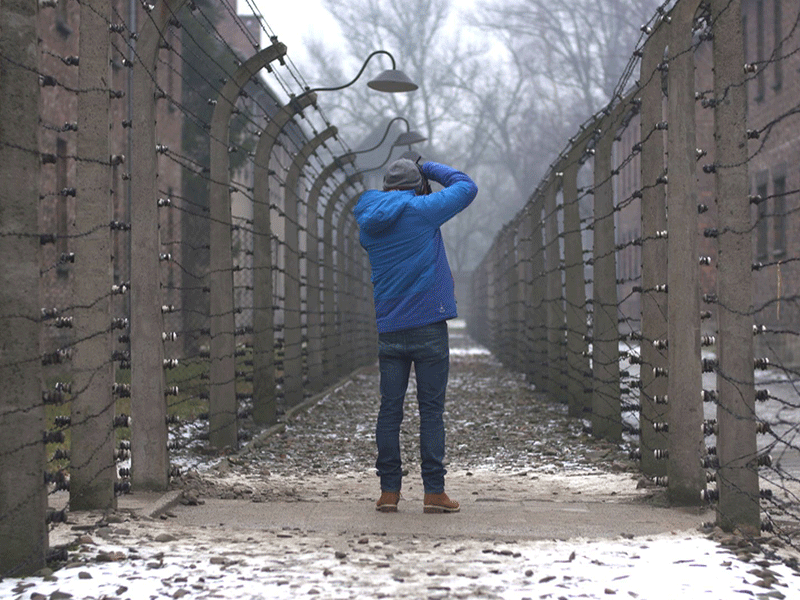This April, on Holocaust Remembrance Day, Americans discovered the results of a survey tracking the national awareness and knowledge of the Holocaust.
Several of these findings were shocking. For instance, nearly half of Americans surveyed could not name a single European concentration camp or ghetto. Close to one third of the 1,350 polled believe that two million Jews or fewer were murdered during the Holocaust.
This historical ignorance, which peaked among respondents between the ages of 18 and 34, exposed an urgent need for Holocaust education in the United States.
READ: RUTH BADER GINSBURG IS AS FORMIDABLE AS ANY SUPERHERO
These disheartening findings also helped to pique my interest for two medium-length documentaries that played earlier this month at the Toronto Jewish Film Festival. These films’ explorations of collective memory and the public’s engagement with the Holocaust deserve discussion and a wider audience. (One hopes they will soon be available on other channels and platforms.)
The first of these films is Saving Auschwitz. Its young director, Jonathan Hayoun, once served as president of the Union of Jewish Students of France, a role that included bringing groups of schoolchildren to the titular concentration camp.
The hour-long film chronicles the contentious history around the camp since its liberation. While millions of visitors walk through the infamous iron gates every year, Hayoun also investigates the contemporary struggles the site faces.
As one stop on a packed Polish itinerary, how deeply are visitors contemplating and commemorating the horrors of the past?
Even within a trim running time, Hayoun gives the viewer much to deliberate, especially in its primacy to the current day.
In one of the most fascinating scenes, set at a 1967 commemoration of the camp, we hear Poland’s socialist prime minister use the occasion to equate the fascist tactics of the Nazis with the “enemies of freedom” in the West. He also, alarmingly, never utters the word “Jew.”
It is not difficult to chart a path between the political theatre of that speech with the revisionist history central to a controversial new law that would reprimand citizens for suggesting Poland’s complicity in the Holocaust.
Today, the name Auschwitz is a chilling symbol for the inhumanity of the Holocaust. More recent efforts to engage and educate people at that site play a pivotal role in preserving this history.
Still, Hayoun does not shy away from exposing the lack of decorum some visitors have in the solemn setting. Meanwhile, citizens from the neighbouring towns, Oswiecim and Brzezinka, are aching to build houses and shopping centres a short walk from the camps.

While Saving Auschwitz explores the politics of historical preservation, a 50-minute animated documentary called Another Planet is more interested in the representation of that factory of death in mass media.
This film brings audiences into several virtual models and digitized depictions of Auschwitz-Birkenau. One is an uncanny simulation of the camps, created by a forensic department of the Bavarian Police. Authorities created this exact model of the camp to be used at the trial of a German man suspected of war crimes, to help verify the validity of his testimony.
Meanwhile, a 2014 virtual reality installation of Auschwitz was praised for its accuracy and its immersive qualities.
To help curate these virtual worlds, director Amir Yatziv interviews many of the designers and creative figures behind these reconstructions.
Another Planet is at its most fascinating, though, during an interview with Maxim Genis, an Israeli programmer whose father had relatives murdered in the Holocaust. A first-person shooter game Genis designed in 2010 drew ire and protest for being set around a real-life prisoner uprising at Auschwitz.
This chapter of the film engages most thoroughly with issues of representation. However, despite Genis’s defence of his game and its evocation of horror, this section needed a more thorough investigation and the presence of other supporting or dissenting voices.
The doc’s nifty all-animated approach, which plants the viewer above and within these simulated depictions of the camps, enables room to think about whether these recreations are respectful.
As we ponder the current state of Holocaust awareness and education, these documentaries are useful and absorbing looks at the myriad of new ways that old histories can be sustained. Regardless, the questions around the most effective way to teach others about those horrors are not always easy to answer.
